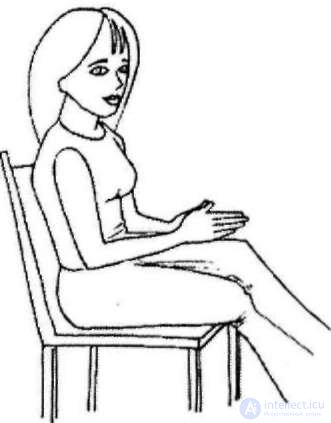Imagine such a scene: you play chess and must make a move. You bring your hand over the chessboard and touch the piece with your finger, indicating that you are going to go with it. And at this moment you notice that your opponent leaned back in his chair and folded his fingers into the "spire." Thus, he non-verbally gives you to understand that he is completely confident in your next move and does not fear it at all. So you have a direct reason to change the intention. You touch another piece and keep watching the opponent. If he clasps his fingers or crosses his hands in one way or another, it means that he does not like your possible move, and you should do just that.

Omitted "spire" The "spire" has two options: raised and lowered. A raised “spire” appears when a person expresses his point of view or expounds his own ideas. Omitted "spire" is characteristic of those who carefully listen to the interlocutor.
Women more often choose the second version of such a gesture. If a raised “spire” is accompanied by a head tilting back, you are dealing with a smug, arrogant person.
Although the “spire” as a whole is a positive signal, its meaning may be different in different situations. Imagine that you are talking about your idea. During the presentation, you managed to note a number of positive signals - open hands, leaning forward, nodding, etc. And suddenly, at the end of the speech, your interlocutor folds his fingers into the "spire".
If the "spire" is accompanied by a number of other positive gestures and appears at the moment when you tell the other person about the possibility of solving his problem, then you can safely continue in the hope of a positive reaction. If the “spire” is accompanied by a chain of negative gestures, such as crossing arms or legs, looking to the side and putting hands to the face, the interlocutor is sure that he can refuse or get rid of you. In both cases, this gesture expresses confidence, but in one case the outcome of the conversation is positive, and in the other - negative. The result is influenced by gestures preceding the "spire"
Summary
Hands are always in sight, showing your emotional state and attitude to what is happening. Immediately, many body language signals are quite difficult to learn, but the gestures of hands can be worked up to automatism. This will help you to control yourself and make a proper impression on others. Having learned to interpret the gestures of brushes correctly, you will look more confident and be able to win more than one chess game.

Comments
To leave a comment
Body language
Terms: Body language